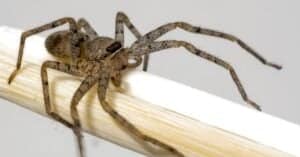In October of 2021, people in Georgia reported giant yellow spiders in their gardens, backyards, and bushes. They were familiar with yellow and black garden spiders, but these looked different. These spiders were about an inch long with yellow, black, and red markings. Their legs looked different too, with yellow and blue bands. The spiders were also in huge golden webs, sometimes several feet wide. It turned out this was a new spider, the Joro spider from Japan. Researchers confirmed their existence in Georgia in 2014, but since then, they have been invading more and more countries, explaining the increase in appearances this past October. Where are they headed next? Could they invade the rest of the United States? Could they make it to Canada? Let’s find out how to map the invasion of the Joro spider.
How Did The Joro Spider Get Here?
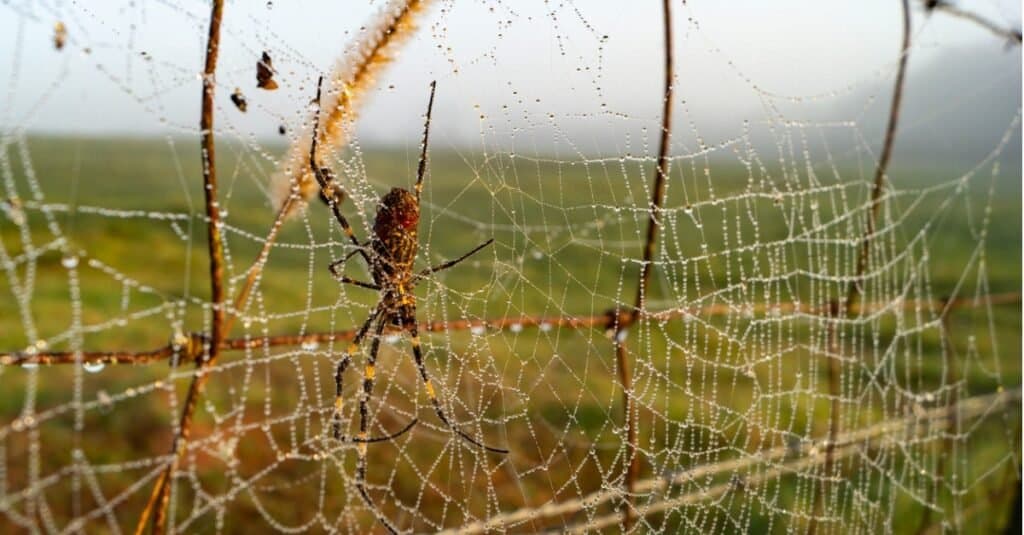
Joro spiders are orb-weavers and can spin giant golden webs. These webs can span up to 10 feet wide!
©iStock.com/Lindsey Lee
Joro spiders probably came to the United States on shipping containers from East Asia. They are originally from Japan and East Asia. One of the most common ways invasive species are introduced into a new environment is by humans. Species can be transported in the water in the ballast of ships by moving firewood and carrying fruits and vegetables from one country to another. People sometimes release pets into the wild, like the Burmese python in Florida.
How Are Joro Spiders Spreading?
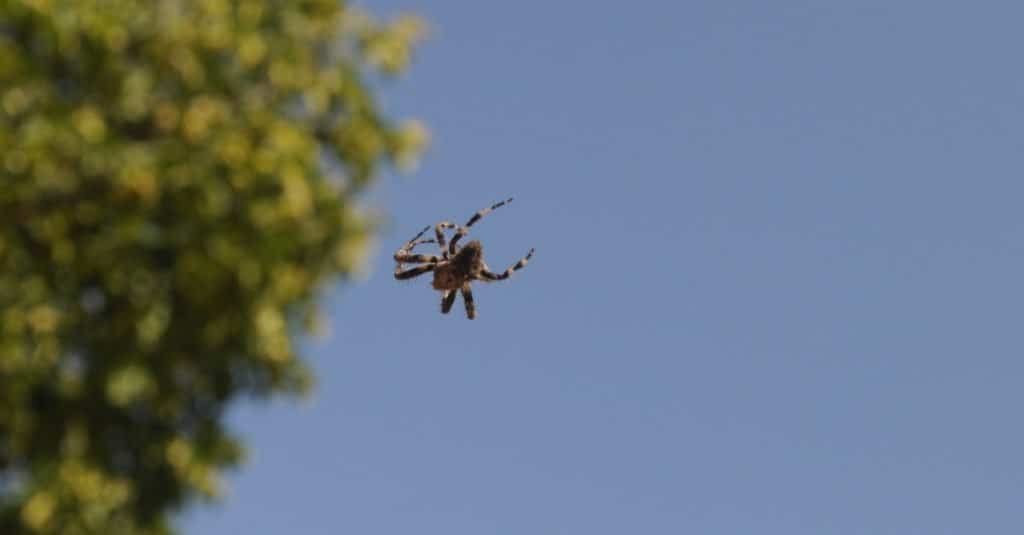
Joro spiders use “ballooning” to relocate when new spiderlings are hatched.
©Ademortuus/Shutterstock.com
Joro spiders are spreading through Georgia and the southeastern states by ballooning. In the spring, the egg sacs will release thousands of tiny spiderlings, using a technique called ballooning. The spiders will climb to the highest point, wait for the perfect combination of air current and electrical field, then spin a parachute out of their webs and coast to a new location. Many spider species use ballooning to disperse their species. They can travel hundreds of kilometers by ballooning!
Are Joro Spiders Here To Stay?
Some species can be introduced to a new environment but die out due to several reasons like lack of food, harsh climates, or new predators. Other species can thrive in a new environment due to the lack of predators and favorable climate. Since the environment and climate in Japan is similar to that of the United States, it explains why the Joro spider is surviving and thriving. New research out of the University of Georgia suggests that Joro spiders can withstand cold temperatures better than golden silk spiders. This means that they could make their way up the East Coast to Washington D.C., New York, and even into Canada.
How To Map The Invasion Of The Joro Spider
You can map the invasion of the Joro spider by following the Global Biodiversity Information Facility (GBIF) mapping website. The GBIF is “an international network and data infrastructure funded by the world’s governments and aimed at providing anyone, anywhere, open access to data about all types of life on Earth.” In other words, they work together with other organizations all over the world to make information about animals, plants, and environments available to everyone. For mapping invasive species, they work with Naturalists, which is “an online social network of people sharing biodiversity information to help each other learn about nature.” By using geotagged smartphones, people can post photos of animals and plants, and then GBIF maps them.
Where Were The First Joro Spiders In The United States?
The first Joro spiders were found in Hoschton, Georgia, which is near Interstate 85. Hoschton is 50 miles northeast of Atlanta.
Where Are Joro Spiders Located Now?
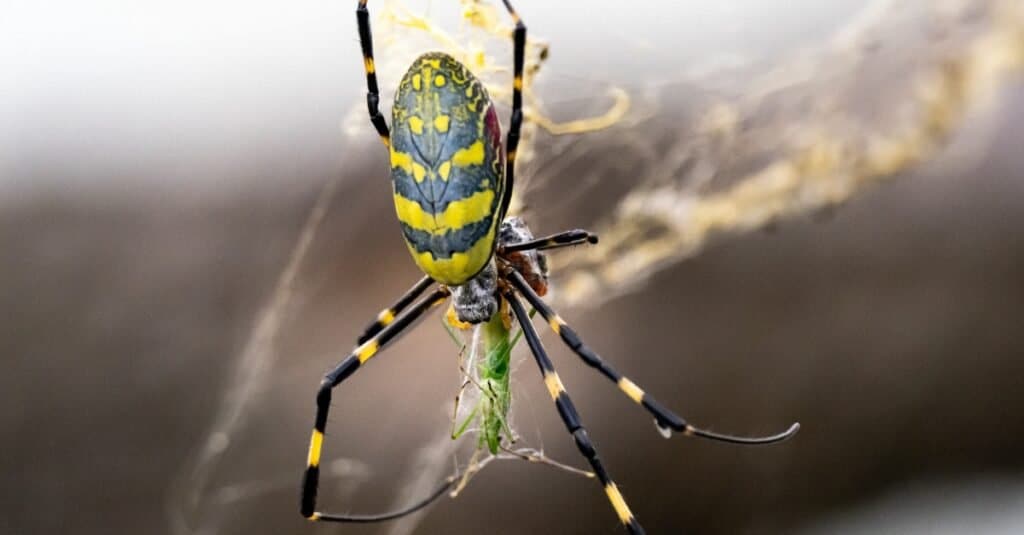
Joro spiders are located in Georgia, South Carolina, North Carolina, and Tennessee.
©iStock.com/David Hansche
Most Joro spiders live in Georgia. According to the GBIF map, there have been sightings in Georgia, South Carolina, North Carolina, and Tennessee. There was one reported by someone in Oklahoma who said they had just driven to Bartlesville, OK from Athens, GA, suggesting it might have caught a ride on their car.
How Far North Is The Joro Spider?
The Joro spider has made it as far north as Asheville, North Carolina. From the epicenter of Hoschton, GA, where the first spiders were found, it is 161 miles. There was one documented on September 26, 2021.
How Far East Is The Joro Spider?
I would have thought that if the Joro spiders were introduced to the United States by coming over on a shipping container, they would be located in the Port of Savannah, GA. But there are no reported Joros in Savannah. Perhaps the container was directly transported to Atlanta or Athens, and they found their way from there. The furthest east they are now located in is Greenville County, SC (September 11, 2021) and Abbeville County, SC (October 2, 2021). Greenville County is 105 miles from Hoschton, and Abbeville County is 90 miles east of Hoschton.
How Far South Is The Joro Spider?
If I were a Joro spider, I think I would head south into Florida instead of north along the East Coast, but these spiders have not made it to Florida yet. The furthest south they have been recorded is in McRae-Helena, GA (October 10, 2021). This is 208 miles from Hoschton and a bit of an outlier, so it may have been transported in someone’s vehicle instead of naturally ballooning there.
How Far West Is The Joro Spider?
Besides the outlier reported in Oklahoma, the furthest west is in Chattanooga, TN (October 12, 2021). Chattanooga is 138 miles from Hoschton.
Where Will Joro Spiders Show Up This Spring?
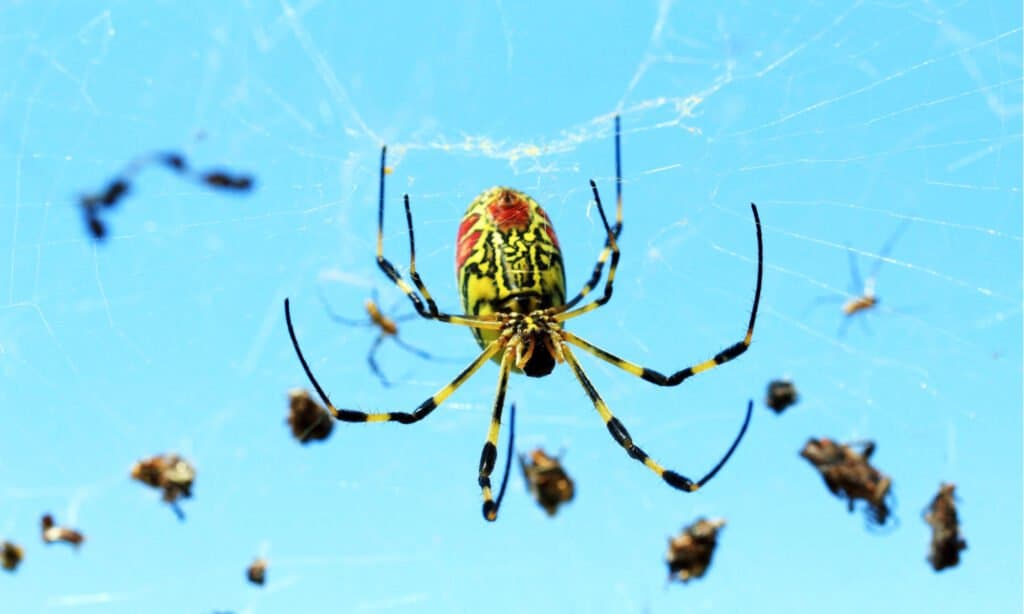
It will be interesting to see how far the Joro spider spreads this spring!
©Surapong Kaewsa-ad/Shutterstock.com
That is the big question! This spring, the egg sacs that were laid in the fall will burst open, releasing hundreds of tiny spiderlings. These spiderlings will balloon to new locations, spreading throughout the southeast states. It might not be until summer or early fall before we start seeing them as they grow from spiderlings to adults. It is also not until late September or early October that the females (the large colorful ones) will reach their full adult size. So, if you want to continue mapping the invasion of the Joro spider, check in with the GBIS map to see how far they spread this year. It may take them a few years to naturally spread to Canada!
The photo featured at the top of this post is © iStock.com/Jef Wodniack
Thank you for reading! Have some feedback for us? Contact the AZ Animals editorial team.




